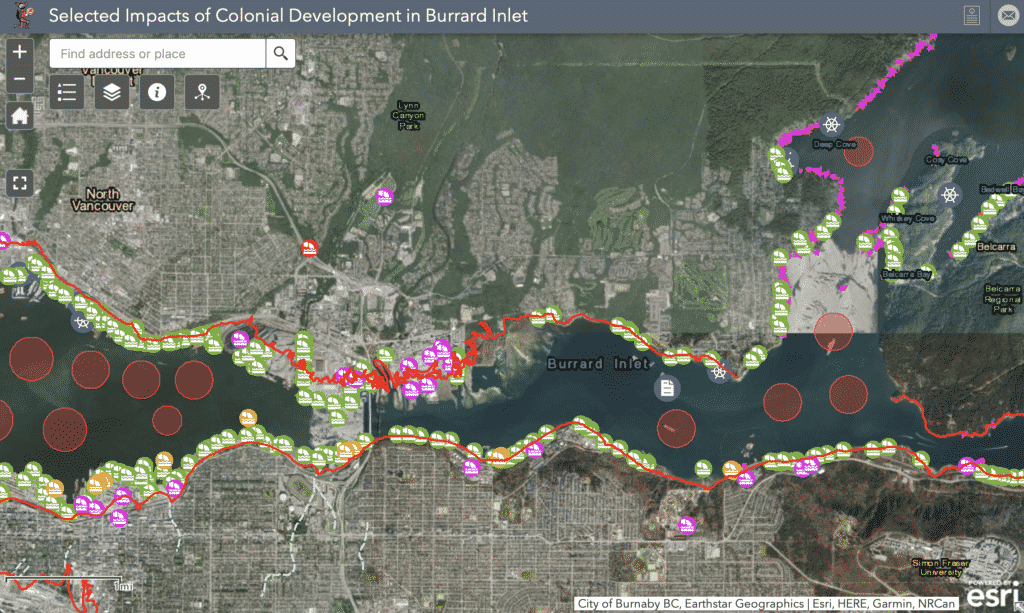Tsleil-Waututh Nation’s way of life is dependent on a healthy Burrard Inlet. We take care of the Inlet, and it takes care of us.
Over 90% of our food was from the marine environment before Europeans arrived, with clams, herring and salmon being some of our most important food sources. Since European contact, however, development and resource use has degraded the health of the inlet to the point that we can’t harvest clams due to contamination, herring have been largely absent for over a century after a dynamite fishery destroyed populations in the late 1800s, and salmon are collapsing across the coast.
These impacts exceed what is allowable under TWN law and infringe on our inherent and constitutionally-protected Aboriginal rights under Canadian law.
TWN has published new evidence detailing some of these impacts, including how contamination, destructive fishing, and shoreline development have impacted Burrard, leaving minimal opportunities for TWN to harvest many culturally important species.
These large-scale and long-term impacts are difficult to convey from TWN’s perspective, so we’ve produced an interactive map to visualize some of the major impacts of colonial development in Burrard Inlet.
If you are interested in seeing where the shoreline was before Vancouver was a city, how many storm sewers empty into False Creek, or where urban development has paved over old streams, then take a look at this new interactive map:

Take time to check out the map where you can scroll around, zoom in, and click on icons and points to learn more.









